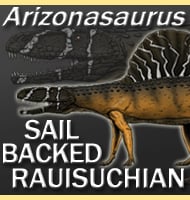In Depth
Gobipteryx is a genus of enantiornithine that lived in Mongolia during the late Cretaceous. Studies of Gobipteryx show that Gobipteryx would have been capable of flight soon after hatching out from the egg. This would have given Gobipteryx a significant survival advantage in a world heavily populated by small theropod dinosaurs. Studies of the wings and muscle attachment points show that Gobipteryx would have easily been capable of powered flapping flight.
Further Reading
- Preliminary note on the palaeognathous bird from the Upper Cretaceous of Mongolia. - Palaeontologia Polonica 29:103-109. - Andrzej Elzanowski - 1974. – Skulls of Gobipteryx (Aves) from the Upper Cretaceous of Mongolia. – Palaeontologia Polonica 37 p. 153-166. – A. Elżanowski – 1977.









